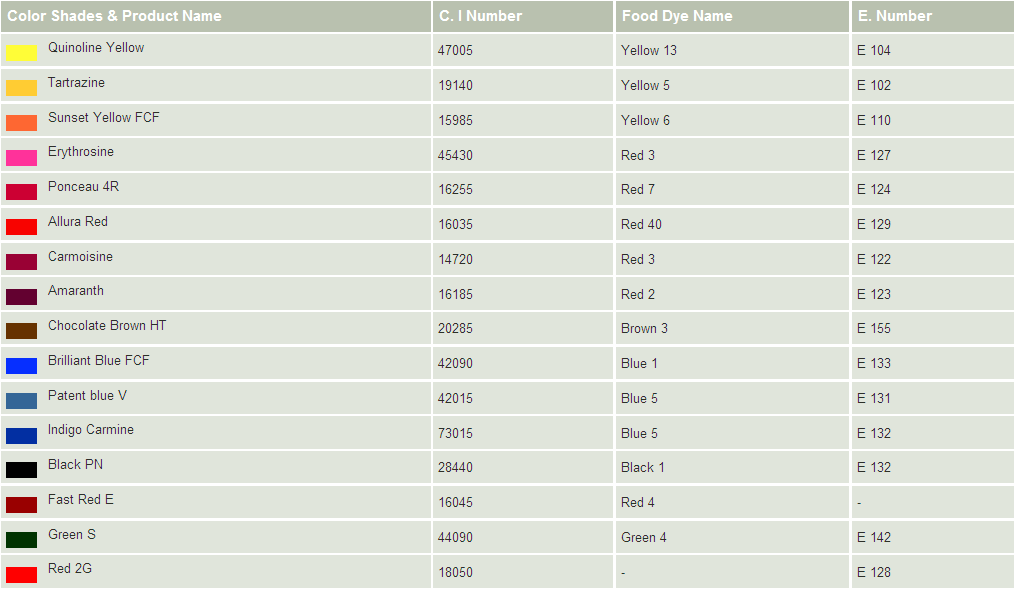The International Food Codex Commission defines colorants as “the substance that regulates the color of the food”. Many substances with color rendering properties have different physical, chemical and physicochemical properties due to differences in their chemical structure and these properties determine the type of products.
Nowadays, the negative effects of food processing techniques on the apperance properties of foods have revealed the need to color the foods for technological reasons. Artificial colorants have increased color tones and color intensities. According to natural colorants, their high stability at different pH levels, ease of application and cheapness have increased their use in foods and decreased interest in natural colorants.
Foods that are constantly developing food production Technologies; They are subject to color fading or loss due to physical and chemical conditions such as heat, light, pH and oxygen in various stages such as processing, storage and sale. However, food manufactures, such as preserving the original color of the food, ensuring the color uniformity of the food, enchancing attractiveness, increasing the attractiveness of the food by satisfying the color differences and losses that ocur during the food processing, such as colorless or low-colored foods.
In a general classification for coloring agents, these substances are divided into two main groups as natural and artifical colorants. However, some natural colorants can also be obtained artificially. In this case, these substances are referred to as natural identical colorants. Colorants are obtained to two;
- Natural colorants
- Artificial colorants
Natural Colorants
Natural coloring agents are pigments from microbial, vegetable, animal and mineral sources.
Organic Natural Colorants
- Anthocyanins
- Ot-Apo-8 Karotenal
- Et-Apo-8-Carotenoic Acid Ethyl Esters
- Vegetable Carbon
- Canthaxanthin
- Plain Caramel
- Caustic Sulfite Caramel
- Ammonium Caramel
- Sulphite-Ammonium Caramel
- Carotenes
- Chlorophylls
- Chlorophyll-Copper Complex
- Koşinal
- Curcumin
- Lycopene
- Lutein
- Beet root red
- Paprika Extract
- Riboflavin
- Robiflavin-5-Phosphate Sodium
Inorganic Natural Colorants
- Aluminum Powder
- Gold
- Iron Oxides
- Silver
- Titanium Dioxide
- Calcium Carbonate
Artificial Colorants
Artificial colorants; chemical substances, which are not found in nature. However, They can be produced by chemical synthesis. Since coal tar is used as the starting material in the synthesis of almost all of these.
Water Soluble Artificial Colorants
The solubility of artificial colorants in water is generally due to their structure in at least one salt form. They can also be examined in two groups as anionic and cationic colorants.
- Azo colorants
- Allura Red AC
- Amarant
- Azorubin
- Brillant Black BN
- Brown FK
- Brown HT
- Litolrubin BK
- Ponceau 4R
- Red 2G
- Sunset Yellow FCF
- Tartrazine
- Triaril Metal Colorants
- Brillant Blue FCF
- Green S
- Patent Blue V
- Xanthane Colorants
- Erythrosine
Oil Soluble Artifical Colorants
Artificial colorants soluble in oil or organic solvents are insoluble in water. Because they do not contain salt from groups such as water-soluble colorants. Due to the toxic properties of these group colorants. They are not allowed to be used for coloring the foods.
Lacquer Colorants
Lacquer Colorants are water-insoluble pigments obtained by precipitating water-soluble artificial coloring agents are aluminum salts by the addition of aluminum chloride onto aluminum oxide. Lacquer colorants can be prepared from water-soluble azo, triaryl methane, xanthene, quinoline and indigoid groups.
The color shades of lacquer colorants may vary depending on the conditions of their preparation, such as dispersibility, coloring strengths, particle sizes and the preparation of the colornats. Lacquer colorants show their best application properties in pH 3.5-9.5 for their stability. Due to the degradation of the colorant-aluminum bond under strong acidic or basic conditions, they are not suitable for use under these conditions.
Lacquer Colorants,
- The presence of water coloring of fat-based mixtures ( cakes, biscuits, fillers, salad, dressings, flexible foods)
- In confectionery; coloring of sugar crystals, frozen sugars and film coated sweets.
- Coloring of compressed tablets in the confectionery industry and pharmacological industry
- In cases where color fading occurs due to light or If it is desired to increase heat stability
- Coloring of products such as powdered drinks, deserts, soups and spices
- Used for coloring of plastic packaging materials, interior lacquers for ink and metal containers
Usage of Colorants in Foods
- Soft Drinks
- Bakery Products
- Dairy Products
- Confectionery Products
- Dry-Mix Products
- Meat and Fish Products
- Canned Fruits and Vegetables
All these groups are the main uses of colorants in foods.

